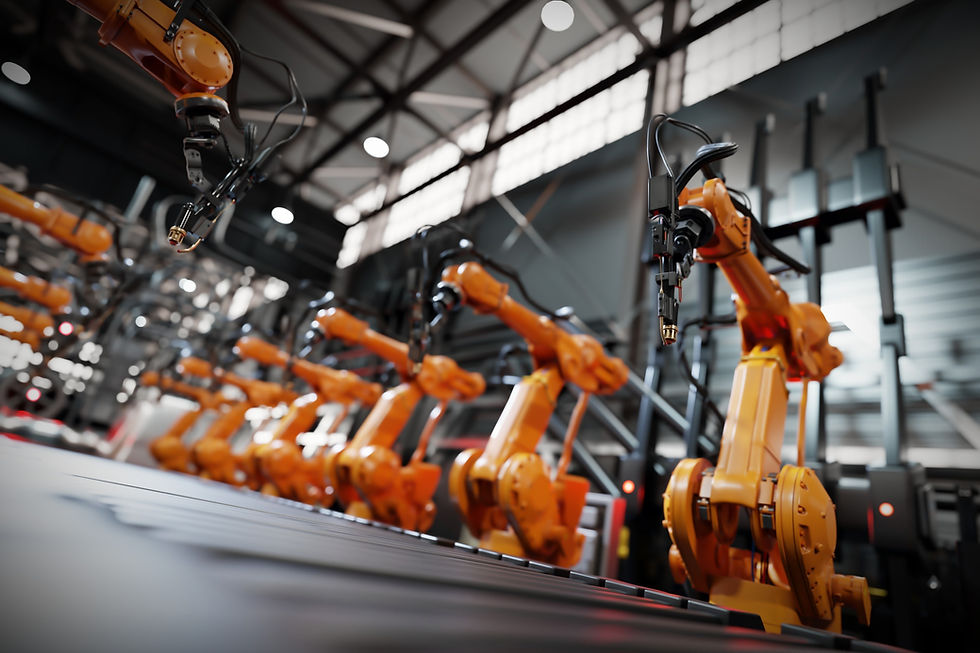The Evolution of Industrial Automation: From Simple Machines to AI-Driven Robotics
- David Antwis
- Apr 12, 2024
- 2 min read

Introduction: Industrial automation has transformed significantly over the decades, evolving from basic mechanical tools to sophisticated artificial intelligence (AI) and robotics technologies. This post explores the journey of industrial automation, highlighting key technological advancements that have revolutionized manufacturing processes and set the stage for the future of production.
Historical Milestones: Industrial automation's roots can be traced back to innovations like the Jacquard loom in the early 19th century, which used punched cards to control a loom’s weaving pattern. This principle was later applied in other domains, culminating in the development of the assembly line by Henry Ford in the early 20th century, which revolutionized the automotive industry by reducing production times drastically. The introduction of programmable logic controllers (PLCs) in the 1960s marked another pivotal moment, allowing for more flexible and reprogrammable control systems in manufacturing.
Technological Advances: The advent of computers and software integration in the latter half of the 20th century brought about a new era in automation. These tools provided the foundation for more complex systems capable of performing multiple tasks with greater precision and efficiency. The 21st century has seen a leap towards systems endowed with AI and machine learning, enabling machines to learn from data, adapt to new situations, and perform complex decision-making tasks.
Current Trends: Today, the integration of the Internet of Things (IoT) and edge computing in industrial settings is enhancing the capabilities of automation systems, allowing for real-time data processing and decision-making at the machine level without the need for constant communication with a central server. Additionally, collaborative robots, or cobots, designed to work alongside human operators, are becoming increasingly prevalent in factories, enhancing productivity and safety.
Future Outlook: Looking ahead, the potential for fully autonomous factories seems ever more plausible, where systems not only perform tasks but also anticipate needs and maintenance autonomously through predictive analytics and AI. As technology continues to advance, the ethical considerations and potential impact on employment also warrant thorough discussion and planning.
Case Studies: One notable example is a leading automotive manufacturer that implemented AI-driven robotics in their assembly line, resulting in a 25% increase in production rates and a significant reduction in errors and rework. Another example is a pharmaceutical company that introduced cobots to assist in delicate assembly processes, which not only improved efficiency but also ensured higher standards of safety and compliance.
Conclusion: The evolution of industrial automation is a testament to human ingenuity and the relentless pursuit of efficiency and productivity. As we stand on the brink of potentially revolutionary changes brought forth by AI and robotics, it's crucial for businesses to stay informed and adaptable to leverage the opportunities these technologies offer. The future of industrial automation not only promises increased operational efficiency but also poses challenges that will shape the very fabric of industry and work.

コメント